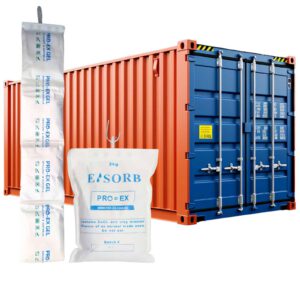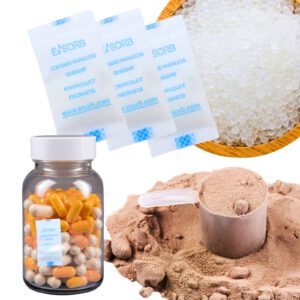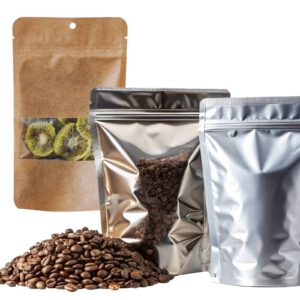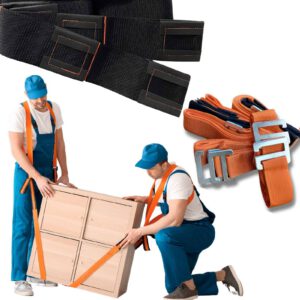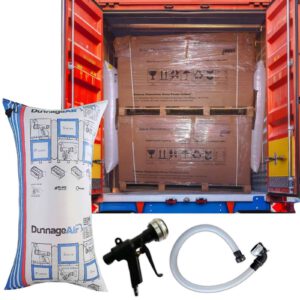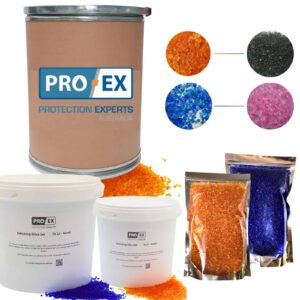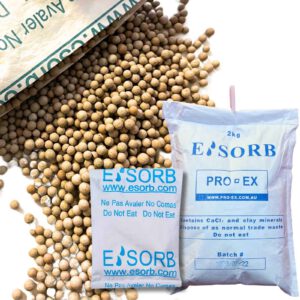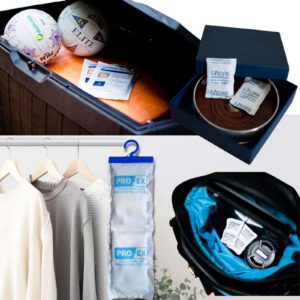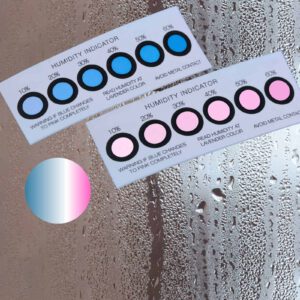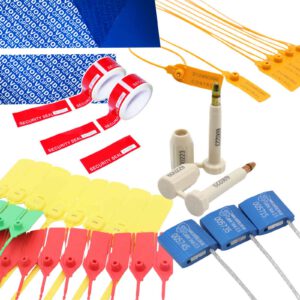Gel desiccants are regarded as the highest-performance desiccant, capable of absorbing up to 350% of its weight Calcium Chloride desiccants – High moisture absorption capacity, absorbing up to 150% of its weight. Mineral-based desiccants – Cost-effective for moderate moisture control, they absorb up to 70% of their weight. Clay-based desiccants – Environmentally friendly & Mil-spec ... Read more
Yes, seal off the vents – this will ensure no “new” air is introduced into the shipping container during the voyage.
A shipping desiccant is a moisture-absorbing product used in shipping containers, warehouses, and storage facilities to prevent condensation, mould, rust, and packaging damage. It works by absorbing excess humidity from the air, reducing the risk of container rain, and keeping cargo dry throughout transit.
When cargo is sealed inside a shipping container, temperature fluctuations cause moisture to condense, leading to: mould and mildew growth on textiles, food, and paper products. Rust and corrosion on metal parts and machinery. Warpage and swelling in wooden products and furniture. Packaging deterioration, weakening cartons, labels, and shrink wrap. Using high-quality container desiccants helps ... Read more
The amount of container desiccant required depends on: Container size (20ft vs. 40ft). Cargo type (wood, textiles, food, machinery, etc.). Humidity levels along the shipping route. Shipping duration (short-term vs. long-term storage). General Desiccant Usage Guide: 20ft Container → 4 to 8 desiccant bags 40ft Container → 8 to 16 desiccant bags High-humidity shipments → ... Read more
For maximum effectiveness, place container desiccants as follows: Hang desiccant bags along container walls to capture moisture as it rises. Distribute evenly around cargo for balanced absorption. Avoid floor placement, as standing water can reduce effectiveness. Allow the desiccant to have room to absorb moisture in the air, and avoid having cargo sitting directly against ... Read more
The effectiveness of shipping desiccants depends on humidity levels, temperature changes, and cargo type. Standard usage lifespan: 45 to 90 days High-humidity shipments: Additional desiccants may be required for extended protection
Quality container desiccants are designed to absorb moisture safely without leaking. Pro-Ex Gel 1kg converts absorbed water into a gel-like substance, preventing spills. Non-leak desiccant pouches ensure moisture is trapped without harming cargo. For high-value shipments, choosing leak-proof desiccants from Protection Experts Australia prevents moisture damage and contamination.
Yes – Industrial-grade desiccants are designed for: Tropical and humid climates where condensation is high. Cold environments where temperature fluctuations increase moisture risk. Ocean freight and long-distance shipments with prolonged exposure to varying temperatures. Using high-performance desiccants like Pro-Ex Gel 1kg ensures that cargo stays dry in all conditions.
Yes, but it depends on the type of desiccant and packaging method: Food-safe desiccants are indirect moisture absorbers designed for use inside shipping containers without direct contact with food. Silica gel desiccants are commonly used in pharmaceutical packaging for controlled humidity levels. Protection Experts Australia provides safe, reliable desiccant solutions for food-grade shipments and pharmaceutical ... Read more
For premium moisture control solutions, Protection Experts Australia offers: High-performance desiccants for shipping containers Expert guidance on choosing the right desiccant for your cargo Bulk pricing and fast shipping across Australia Order Your Shipping Desiccants Today! 📞 Need help selecting the right desiccant for your shipment? Contact Protection Experts Australia for expert advice on preventing ... Read more
Container rain refers to moisture condensation inside a shipping container that occurs when warm, humid air cools down and forms water droplets on the container’s interior surfaces. As temperatures fluctuate during transit, this condensation can drip onto goods, leading to mould growth, rust, corrosion, and packaging damage. When the container is exposed to temperatures below ... Read more


